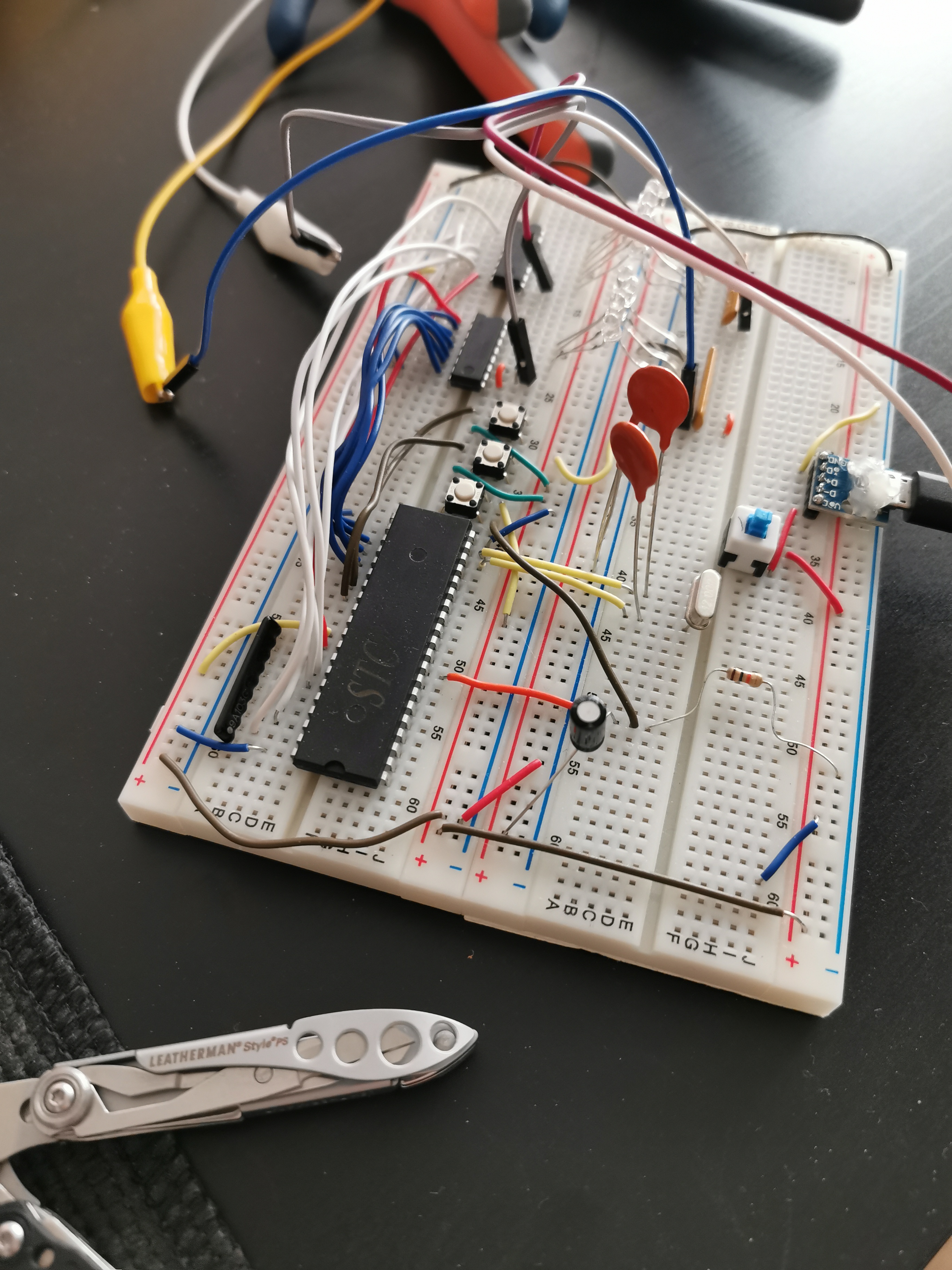A couple of people have asked me why I started the art project down the path of using an 8051 MCU, which is a fairly old microcontroller (heck, I found out I looked at those chips back in 2006!), rather than using one of the more modern hacker/maker solutions such as Arduino. The answer I already gave in that post: I had it already here.

I bought a devkit for it hoping to be able to hack on the LED heart I bought as a surprise for my wife on Valentine’s day, which was centered around the same micro. Now, with hindsight, that was silly: the board was explicitly marked with an AT89S52 name, which is a much more common chip, and probably one for which I could have found a devkit/programmer in much shorter time, but it turned out to be a nice exercise nonetheless.
Indeed, I ended up having to learn a lot more about this chip, its programming, and refreshing my (terrible) electronics understanding. And while this has been breaking my brain at times, it also stretched it to learn something new. I guess I now know how my wife is feeling while learning Python coming from a humanities background.
I had another micro at home. Some time ago I wanted to figure out how to send a certain sequence of infrared commands to my TV via Google Assistant (it’s a long story, sometimes my TV doesn’t initialize the audio return channel correctly), and I ended up buying (but never using) an Adafruit Feather M4 and an AirLift FeatherWing. I soldered the terminals and made sure they worked, but only played with it briefly.
The Feather comes with CircuitPython, a MicroPython implementation firmware, which actually is fairly nice to write simple logic for the microcontroller, and is very easy to deploy: you just need to copy the Python files in the virtual USB flash drive that appears when you connect the board to the computer. It also includes a very nice interactive Python shell you can use to experiment without needing to commit to code (yet). And with the AirLift you also get support for controlling remotely via WiFi, and setting up all kind of request handling.
On the other hand, the 8051 is a fairly complicated tool. The ISA has not had any refresh since 1980 for what I can tell, and that’s on purpose: binary and pin compatibility appears to be the main advantage on using 8051 derivatives chips (or cores on FPGA). You’d think that with that having stayed the same we would have very advanced toolchains for it, but you’d be wrong. As far as I can tell, the only maintained open-source compiler for this is SDCC, and even that barely just. You might have seen my rants about this on Twitter, and if not, fear not: I’ll write a post about it next week.
So why did I go for the 8051, which is significantly older, harder to write code for, harder to program (you either need a devboard, or make sure you provide the right ISP headers on the board), and with quite a few question marks on its availability?
Well, the Feather only has a few really general purpose I/O lines. While both the M4 and the ESP32 supposedly should have enough GPIO lines, the Feather is a specific configuration, that commits a lot of lines to specific usage, such as an I²C/SPI bus to communicate with different Feathers. The usual answer to this is to include something like the MCP23017, which is an I/O expander that you drive via the I²C bus. But as it turns out, not only I don’t have one of those at home, but even Adafruit appears to only sell it on an Expander Bonnet for the Raspberry Pi. I’m not sure why there’s no FeatherWing with it, despite the fact that they document how to use one with CircuitPython, and while I’m sure I could design one, or look for an unofficial one, it’s something I don’t want to get to right now.
On the other hand, 8051 and its clones come with a lot more GPIO lines, and most of those are uncommitted if you start from nothing. The DIP-40 packages have 32 lines, and if you don’t need to use external memory, you have at the very least 16 uncommitted lines. Of the other 16 lines, some are shared with other functions, including external hardware interrupts, serial port, and most in-system programming interfaces.
Now, theoretically it seems like the ESP32 chip also have quite a few GPIO lines, although I only counted 14 uncommitted lines on their QFN packages. I guess you can scavenge a few more lines by not using some of the features, but that might end up conflicting with the MicroPython interfaces anyway.
So yeah I will probably eventually move to a different design that includes the MCP23017. Maybe I’ll end up designing a Feather Base (if not a proper FeatherWing) for it after all, to prototype with the already designed (and sent to fab) actuator board. But that’s a story for another time.
